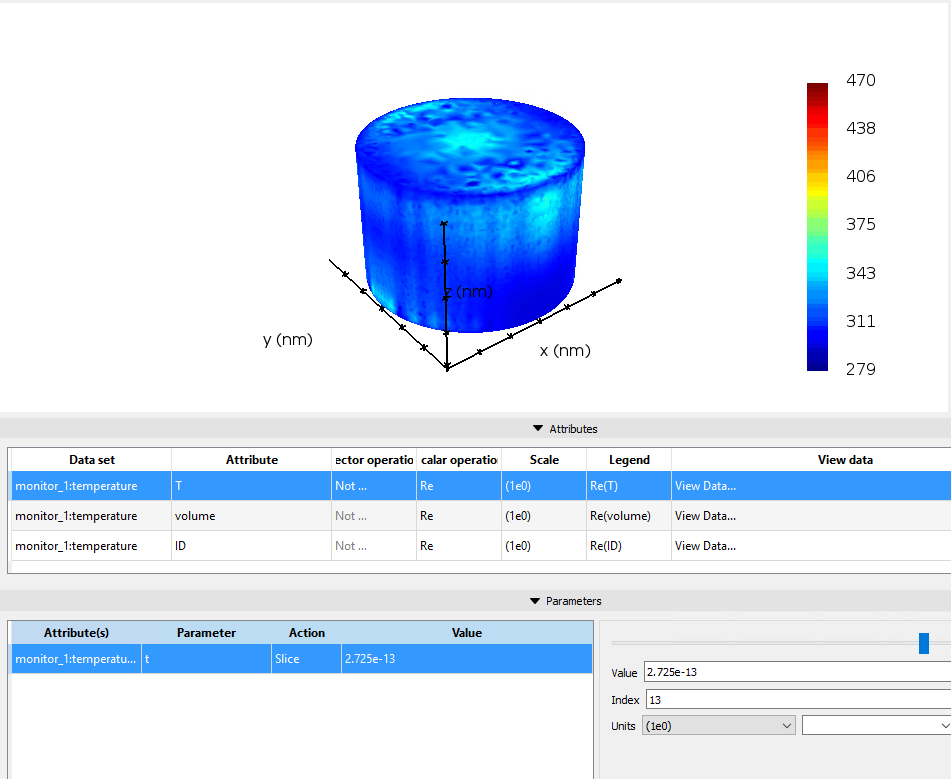TAGGED: heat, heat-transfer
-
-
February 2, 2022 at 1:42 pm
NvN
SubscriberHello!
I am running a transient HEAT simulation using an imported heat source, a pulse in the form of the power absorbed file from lumerical FDTD. My simulation starts with everything at room temperature 293K with the boundaries of the simulation region held at 293K. However, as most of the particle I am looking at heats, there are locations of my simulation where the temperature drops well below RT to 279K. This is puzzling to me as I feel it should never drop below 293K.
February 3, 2022 at 11:39 amkghaffari
Ansys EmployeeHi.
Thank you for reaching out. Good question. In the boundaries, positive sign indicates input power and negative sign indicates power dissipation. Therefore here, IÔÇÖd expect to see a negative value for P_temperature. As you have mentioned this is most likely leading to the unexpected temperature results.
This issue could be related to the mesh refinement. I would recommend decreasing the mesh size in your simulation and observing its impact on the results. You can do this through the global settings in the solver or by adding local mesh constraints. Please test and let me know if this helps.
Best regards
February 7, 2022 at 1:22 pmNvN
SubscriberDear kghaffari Thank you so much for your response, this makes good sense! If I have a bad mesh leading to rogue areas on the surface that drop below RT, and then it makes sense that the boundaries act as an input and inject power to the particle.
I ran a simulation with a 1nm mesh constraint and indeed there is significant improvement: now there are only drops by 3K and the power running through the boundary fully indicates power dissipation. I'm gonna keep trying to improve the mesh to completely resolve the issue.
Many thanks again Nika
February 7, 2022 at 5:07 pmkghaffari
Ansys EmployeeHi Nika Thank you for the update. Great to hear improving mesh refinement is effective here.
All the best Khash
Viewing 3 reply threads- The topic ‘Why is my HEAT simulation dropping below RT? and what does P_boundary represent?’ is closed to new replies.
Ansys Innovation SpaceTrending discussionsTop Contributors-
3597
-
1243
-
1092
-
1068
-
953
Top Rated Tags© 2025 Copyright ANSYS, Inc. All rights reserved.
Ansys does not support the usage of unauthorized Ansys software. Please visit www.ansys.com to obtain an official distribution.
-
The Ansys Learning Forum is a public forum. You are prohibited from providing (i) information that is confidential to You, your employer, or any third party, (ii) Personal Data or individually identifiable health information, (iii) any information that is U.S. Government Classified, Controlled Unclassified Information, International Traffic in Arms Regulators (ITAR) or Export Administration Regulators (EAR) controlled or otherwise have been determined by the United States Government or by a foreign government to require protection against unauthorized disclosure for reasons of national security, or (iv) topics or information restricted by the People's Republic of China data protection and privacy laws.












